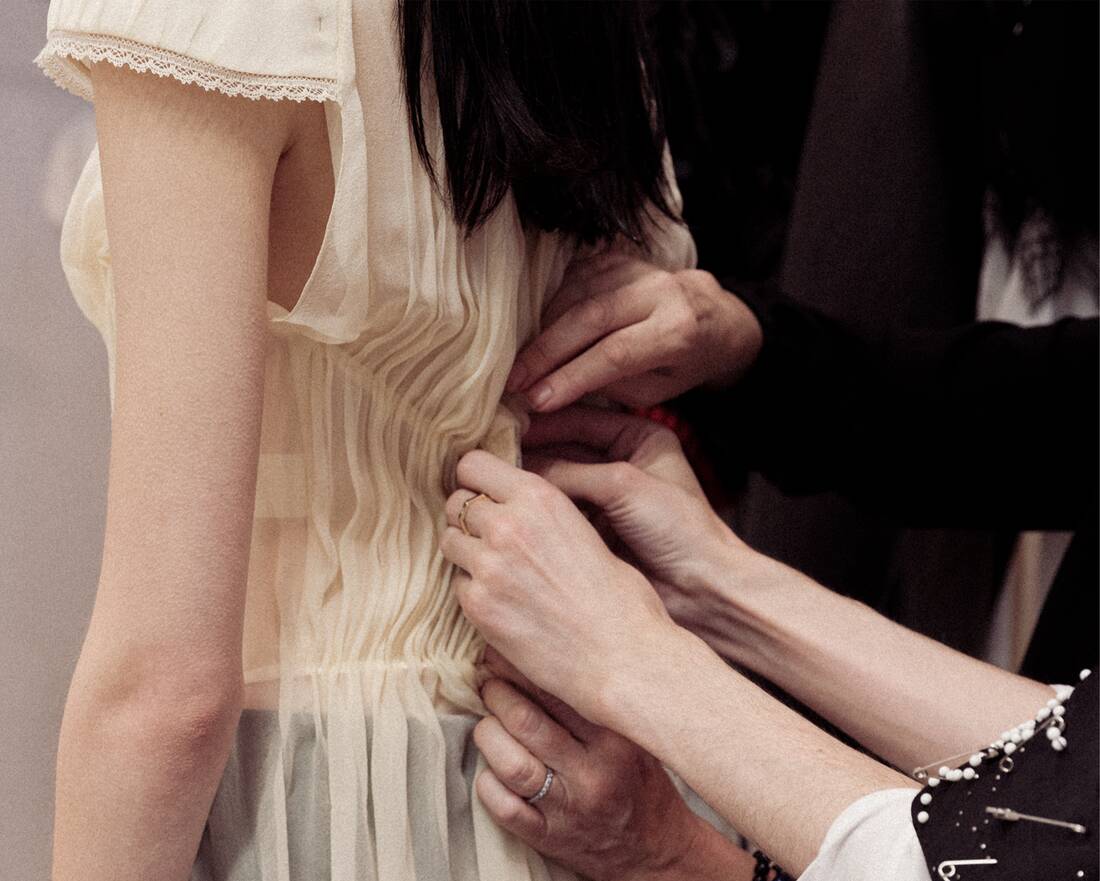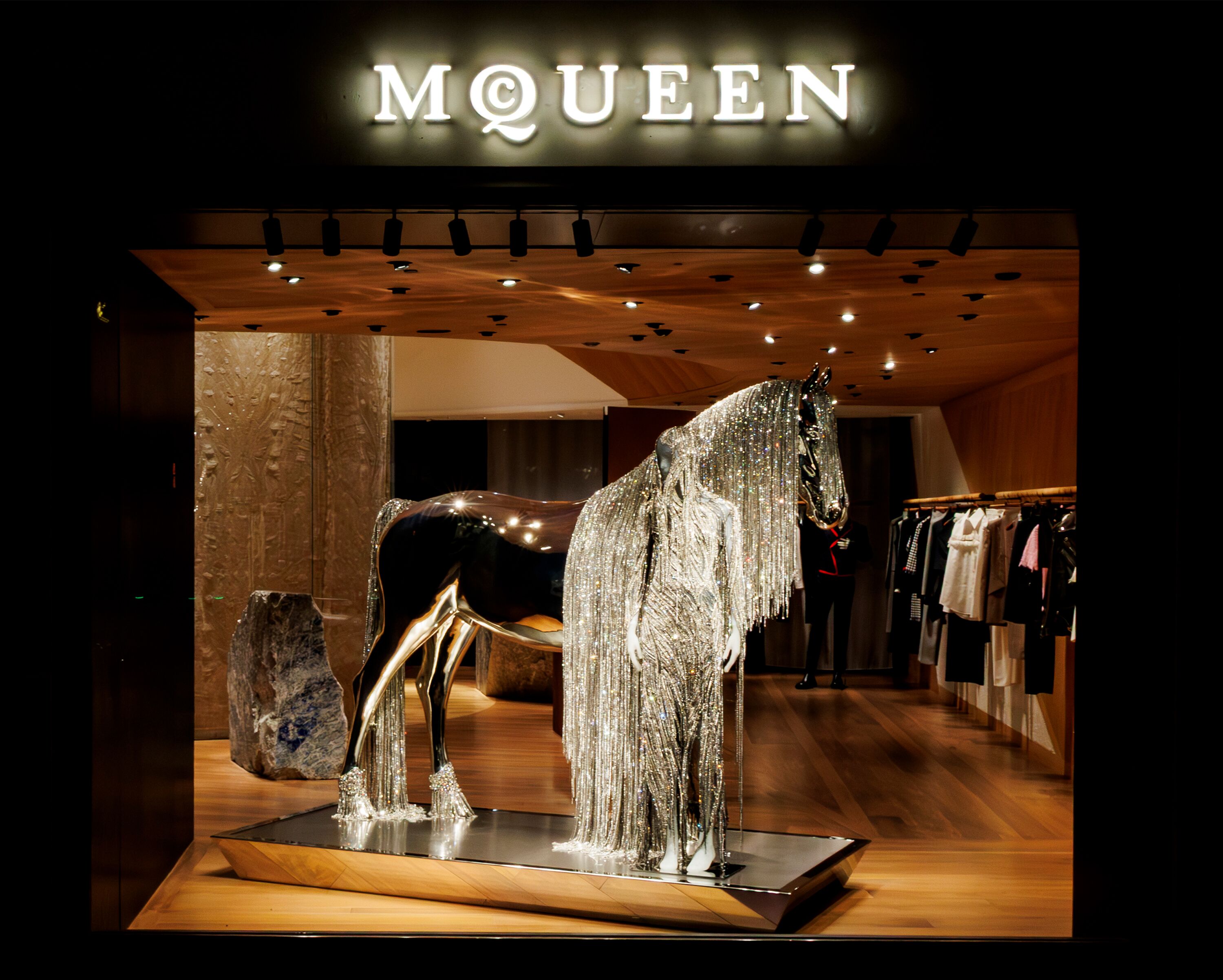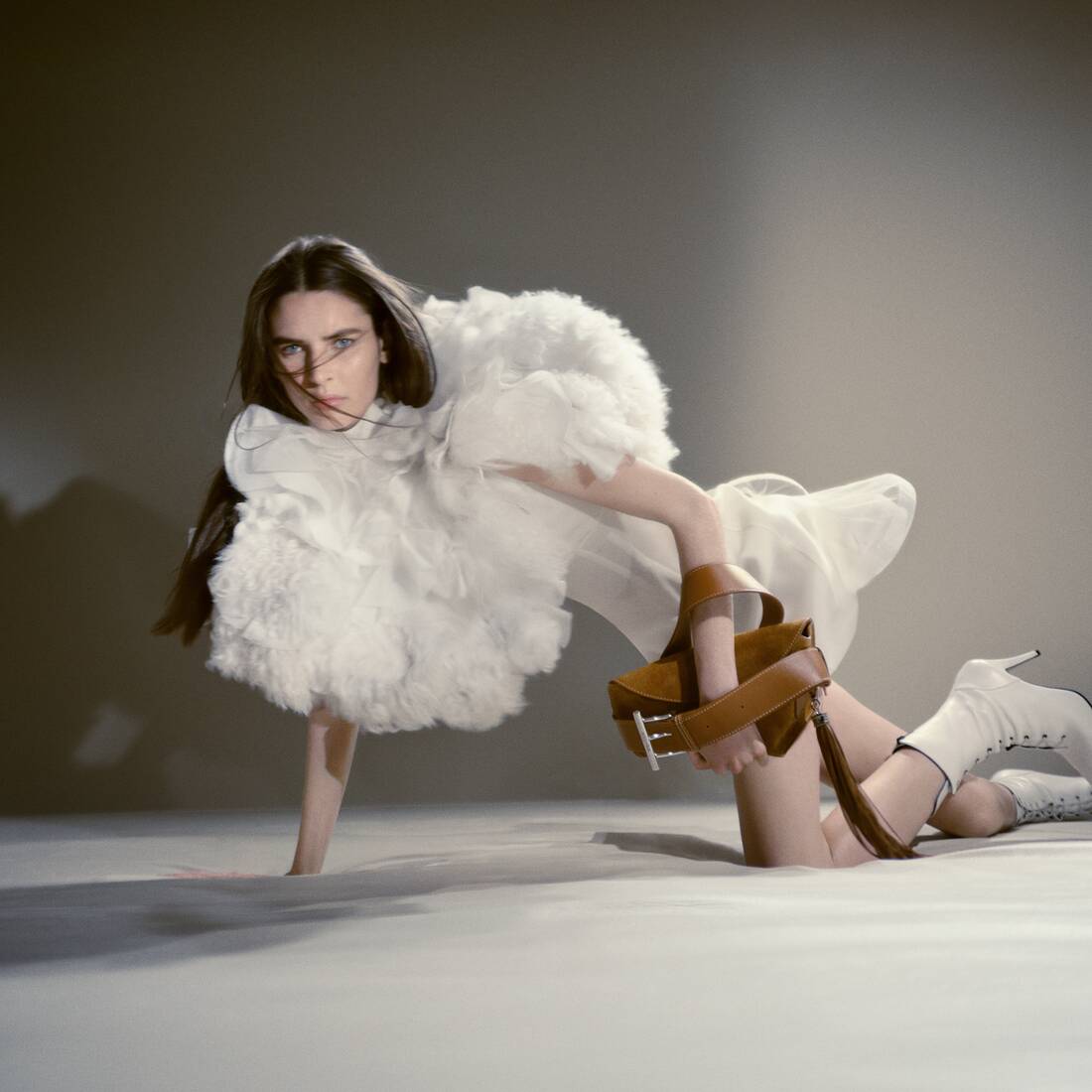McQueen Creative Collaborators: A. G. Cook
Discover the processes behind the Spring Summer 2026 soundtrack created by A. G. Cook.
McQueen’s collaboration with British artists driving innovation in music continued with the Spring Summer 2026 show, featuring a soundtrack produced by A. G. Cook.
Cook, a Grammy award-winning musician and music producer characterised by his innovative and experimental style, crafted an original score inspired by the collection’s references.
Expansive cinematic layers combine elemental-inspired sounds – water, earth and fire - with syncopated techno beats. An exploration of the tension between unsettling and uplifting, it transitions between acoustic and synthesised—a modern interpretation of folklore, Anglo-Saxon and the urbane combined, pounding towards a dreamlike release.
Can you tell us about the fundamental ambition of the soundtrack and how it was developed?
The brief was this kind of strange British folklore with The Wicker Man’s 1970’s feel, something that I like anyway. My interpretation of it was to move between different worlds, whether that is electronic or acoustic and unplugged, or something that is a bit playful and then more serious—this idea of something being sensual or dark at times and merriment that could be dark as well.
A whole chunk of the piece uses very manipulated, re-sampled versions of me playing this very small tin whistle. Then I was seeing if I could grow that into something quite synthetic. That’s why some of the dodgy tuning you can hear is still in there! I played a few different instruments and recorded them, seeing if I could make them more tough and industrial, then bringing them back into something small again.
That’s how I started it, and that was quite random and quite amateur basically. I’m not a registered tin whistle player!
How does the soundtrack work with the collection's driving narrative of submitting to the power of nature?
I grew up in London, which already has a funny connection to nature. It is green, but it’s not. I’ve also spent a lot of time in LA, which is another kind of dystopian connection to nature. I’ve also spent a lot of time in different national parks within the UK and the US, in Montana, in Yellowstone National Park as well. So. this makes me feel like a city boy who has gradually got quite lost in the wilderness. This is something I’ve been messing with for quite a few years.
In my music, for a long time, I sort of banned instruments. I was only using a laptop, two speakers and one microphone. No guitars, no musical keys, no anything. Now, gradually, I’ve been re-learning and getting back into things, whether that’s acoustic guitar or field recording. A lot of things that used to be banned for me have returned.
With a brief like this, where it’s about the tension we all have with the natural world, there is fun to be had with that. There is a sort of cheekiness to it.
Tell us about how the creative references for the show,The Wicker Man, influenced your approach and informed the piece?
There are horror elements, but it has got this kind of scary smile to it the whole time. There is something ancient. It’s a collage, not really all from one place. The film plays with this tension of an outsider who is in there…
The music itself has a lot of moments of silence in the soundtrack, then when the music comes in, lyrically, it signposts things that the characters will never say out loud.
What were your own creative references?
With the UK being such an old country, you have this constant mythology that can go so far back, to the point where distant history starts to feel almost like distant future. I was playing with the past, present, future. I imagined going 3000 years back to the roots of some towns and villages that still exist. I thought about what was going on in the year 1000, abstractly. Anglo-Saxon London where things haven’t really happened yet, but at the same time you have the same landmarks.
I think it’s similar in pop music too, with different genres. It’s obviously not as far back as that but there is an idea that we can play with eras, or a throwback. Is that futuristic as well? I was having a lot of fun with the mythology of the UK, musically and historically.
In that, I was looking at the spirals that turn up in old Celtic art that could almost have a Bridget Riley Op Art feel. They are both worlds apart, but there is something almost British about that. The wildness of William Blake, going back to Beowulf and then going forwards to the Beatles. Maybe it is just an idea of Britishness that we are trying to put on top of things.
How did your experience with club sets and cinematic soundscapes shape this particular score?
The different sections of the soundtrack are triggered as if I’m doing a club set. There are these one or two-minute tracks that I’m making sure hit at the right time and with the right looks.
I think the live-ness is really nice. With my own songs and my process, I tend to test things out for the first time live or in a club setting—things that are unfinished. I like to think of all music as being slightly unfinished anyway, because you always have the remix or the edit, or people responding to that. This is how genres get built up in this sort of Tower of Babel way. I think of all music as scrappy and unfinished.
I think my process is to engage with that and to milk the humour, the songwriting and the collaboration that is ripe in music itself.


